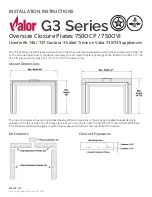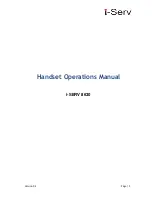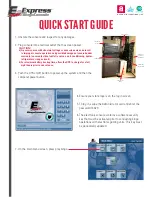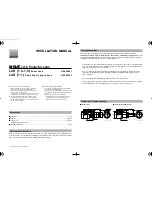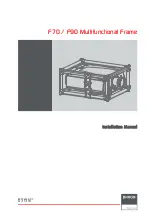
11
The ABS plastic shell and EPS foam insert create a durable helmet that absorbs impacts.
Multiple vents for airfl ow ensure maximum cooling.
PROTECTION AND VENTILATION
3
The helmet should fi t tightly around the user’s head. If you can tilt it forward or backward,
then you need to tighten the strap adjustment.
The helmet must fi t tightly on all sides of the wearer’s head and the buckle must be
securely fastened for maximum protection.
All adjustments should be checked each time the helmet is worn to ensure it fi ts properly
at all times.
FINAL SAFETY CONTROL
4
The helmet is equipped with an adjustment knob. This fi t system allows the helmet to be
fi tted quickly and e
ff
ortlessly. The knob rotates clockwise and counterclockwise causing the
system to contract or expand. This quick process will allow the helmet to fi t perfectly to the
user.
WARNING:
The fi t system does not keep the helmet on the head during an accident.
Therefore, it is very important to adjust the straps correctly and fasten them correctly.
HELMET FITTING SYSTEM
2
WARNING:
When putting on the helmet, remember that there should be a chin
guard directly under the chin.
B. The straps must be properly and evenly tensioned. Place the helmet on the child’s
head, fasten the buckle and check if any straps are loose. If you need to adjust the
straps, remove the helmet from the child’s head, adjust it, and put it on again. To
adjust the straps, use the buckles and pull up or down. If the length is reduced, the
excess strap should be put through the rubber ring so that it does not interfere with
the ride, (see parts no. 5). After making the adjustments, the straps should form
a shape resembling the letter „Y” around the ears.
C. To check if the straps are tensioned is correct, the helmet must be on the child’s
head and properly secured. The child wearing the helmet should open their mouth
slightly, there should be a slight tension on the chin but not enough to cause any
discomfort or a feeling of su
ff
ocation.
WARNING:
Any adjustments when fi tting should be made with the helmet
in the correct position (see picture). Failure to do so will result in a bad fi t.
A poor fi
t may cause the helmet to shift or come o
ff
in an accident.
When the helmet is fastened, grasp it and pull gently. If the helmet moves in any
direction, increase the belt tension, if there is still movement, check the adjustment
system. It should not be possible to remove the helmet without undoing the belt
buckle.
WARNING:
Check the adjustments of the helmet each time it is used.






















